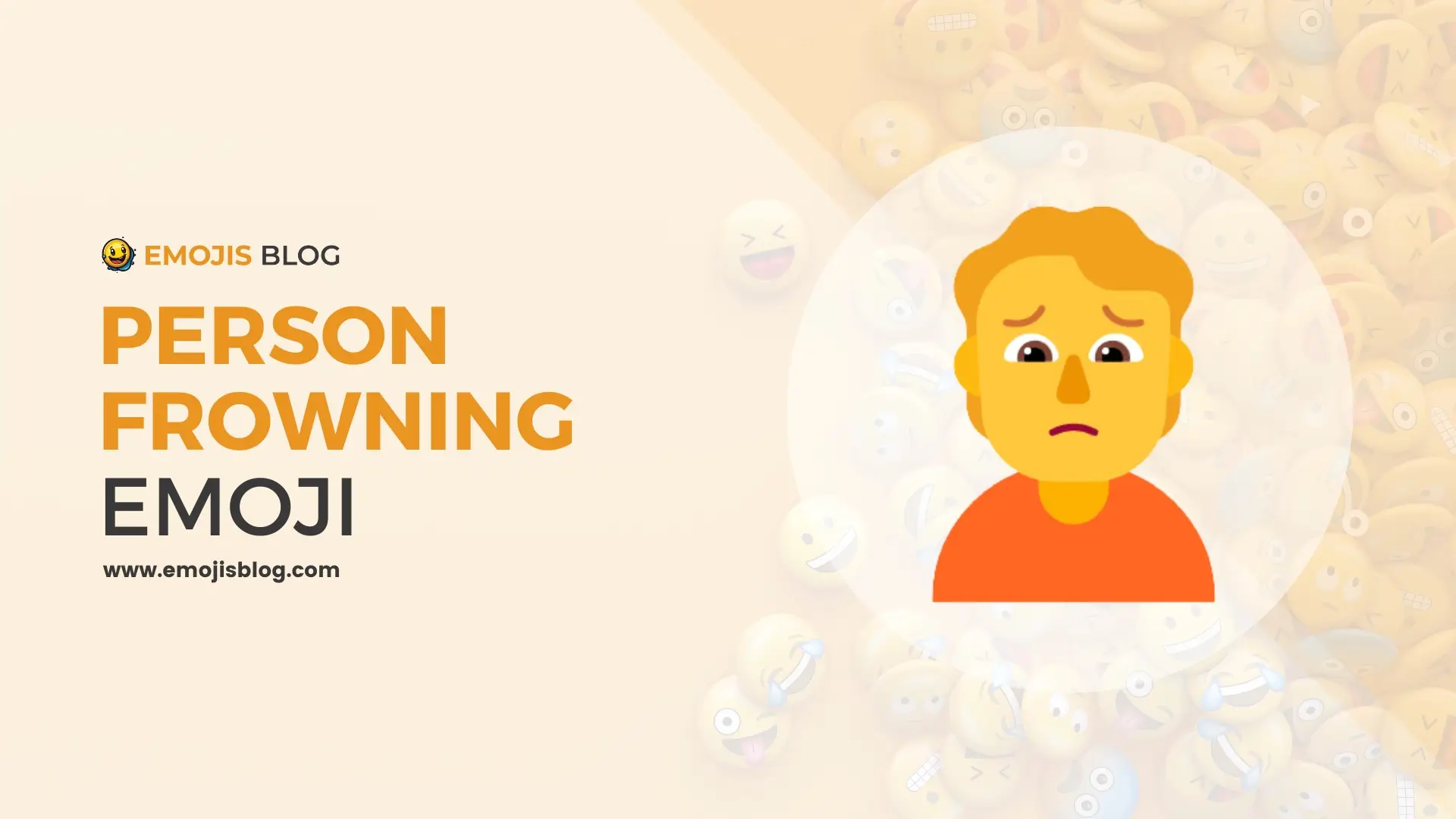What Does The Person Frowning Emoji Mean 🙍
🙍
The Meanings Of Person Frowning Emoji 🙍
The 🙍 person frowning emoji is a visual symbol used in digital communication to express a range of negative emotions, including sadness, disappointment, disapproval, or concern. It depicts a person with a frowning face, indicating a mood of unhappiness or discontent. This emoji serves as a nuanced way to convey feelings that might be difficult to express with words alone, allowing users to add emotional depth to their messages. Over time, it has been updated to include gender-specific variations, thereby offering a more personalized and inclusive way to communicate feelings across diverse digital platforms.
Technical Information
| Attribute | Details |
|---|---|
| Unicode Version | 6.0 (2010) |
| Emoji Version | 1.0 (2015) |
| Unicode Code Point | U+1F64D |
| Shortcode | :person_frowning: |
| Variations | 🙍♂️ (Man Frowning), 🙍♀️ (Woman Frowning) |
| Category | Smileys & Emotion |
| Subcategory | Face Concerned |
| Keywords | frown, gesture, person frowning |
Understanding the 🙍 Person Frowning Emoji
In the vast expanse of digital communication, emojis have become an indispensable tool for expressing emotions, reactions, and sentiments that words alone might fail to convey. Among the myriad of emojis available, the 🙍 person frowning emoji stands out for its ability to express discontent, sadness, or mild frustration. This article delves into the origins, usage, and variations of the 🙍 person frowning emoji to provide a comprehensive understanding of its significance in digital interactions.
Origins of the Emoji
The 🙍 person frowning emoji was officially included in Unicode 6.0, released in October 2010, making it part of the first wave of emojis that were standardized for global use across different platforms. Initially, its design and interpretation could vary significantly across devices and operating systems, leading to diverse representations. However, the core idea remained the same: to depict a person with a frown, signaling displeasure or concern.
Design and Variations
The standard design of the 🙍 person frowning emoji features a person with eyebrows slightly raised and the corners of the mouth turned down, clearly indicating a frown. The gender-neutral representation was later complemented by gender-specific variations – 🙍♂️ (man frowning) and 🙍♀️ (woman frowning) – to offer more specificity in communication. Over the years, the emoji has seen subtle refinements in its depiction across different platforms to make it more expressive and inclusive.
Usage in Communication
The 🙍 person frowning emoji is versatile in its usage, often employed to express a range of negative emotions such as disappointment, sadness, disapproval, or concern. It can be used in personal messaging to convey sympathy towards a friend’s unfortunate news or in professional contexts to show concern or disagreement with a proposed idea without resorting to harsh words. Its utility lies in its ability to soften the blow of criticism or to express solidarity in discomfort.
Cultural Interpretations
The interpretation of the 🙍 person frowning emoji can vary widely across different cultures. In some contexts, it might be seen as a mild expression of displeasure, while in others, it could be interpreted as a more profound form of sadness or rejection. This cultural variance highlights the importance of considering the audience’s background when using emojis to communicate complex emotions.
Conclusion
The 🙍 person frowning emoji has cemented its place in our digital lexicon as a versatile tool for expressing a spectrum of negative emotions, from mild disappointment to significant concern. Its evolution from a single, gender-neutral design to include gender-specific variations reflects the growing demand for more nuanced and inclusive forms of digital expression. As with any form of communication, the key to using the 🙍 person frowning emoji effectively lies in understanding the context, the audience, and the nuances of digital etiquette.

